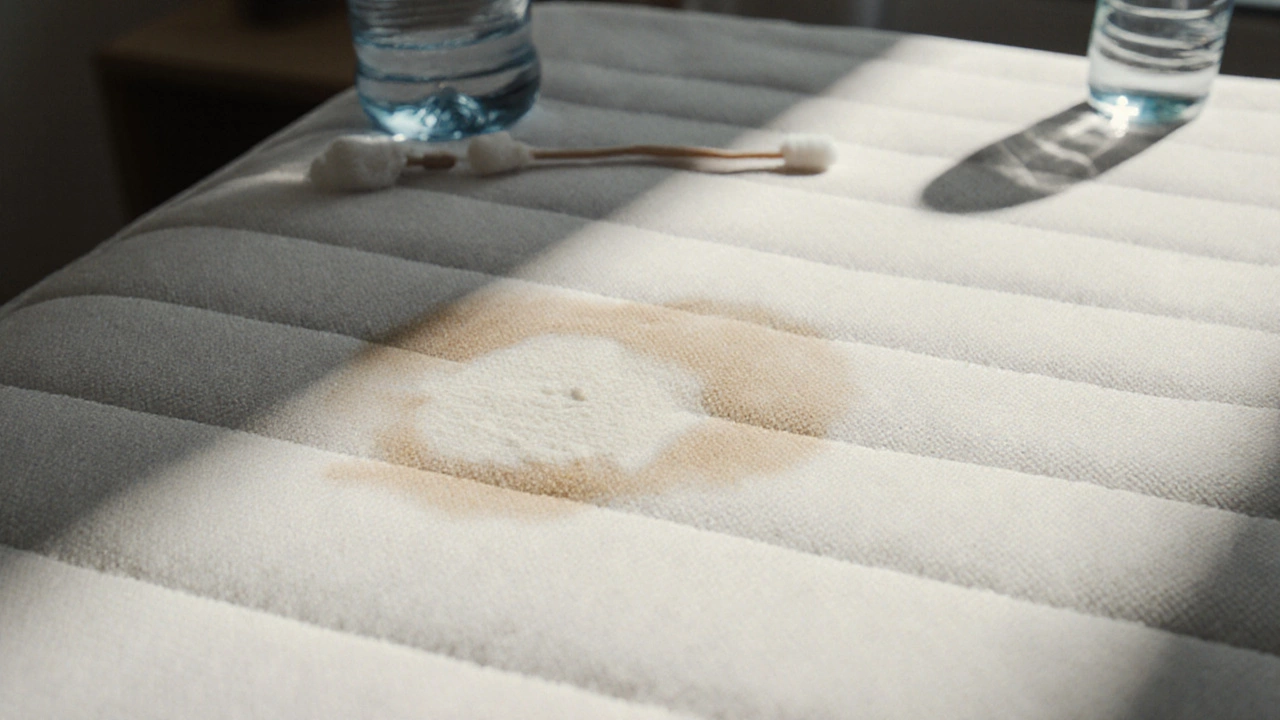Sperm Stain Removal: How to Clean It Safely from Fabric and Mattresses
When you’re dealing with a sperm stain, a biological stain that can set quickly and leave odors if not treated properly. Also known as semen stain, it’s one of those messes people don’t talk about—but it happens, and it needs a smart fix. Unlike coffee or wine, sperm contains proteins and enzymes that bond to fibers. If you just wipe it with water, you’re not removing it—you’re spreading it and making it harder to clean later.
The key is acting fast and using the right tools. Cold water is your first ally. Hot water cooks the proteins into the fabric, locking the stain in. That’s why most DIY guides start with rinsing under cold running water from the back of the fabric. You’re pushing the stain out, not deeper in. For upholstery or mattresses, blotting with a clean cloth soaked in cold water works best. No scrubbing. No rubbing. Just gentle pressure to lift it away.
After rinsing, you’ll need something to break down the remaining proteins. Enzyme cleaners are the gold standard here. They’re the same kind used for pet accidents and baby spit-up because they digest organic matter without harsh chemicals. You can buy them at pharmacies or make a simple version with hydrogen peroxide, baking soda, and a drop of dish soap. Vinegar? Skip it. Acid can set protein stains, and you don’t want to turn a stain into a permanent mark. And forget bleach—it can yellow fabric and damage fibers, especially on mattresses.
For upholstery, fabric-covered furniture that’s prone to absorbing bodily fluids and odors, always check the care tag. Some materials can’t handle moisture at all. If you’re unsure, test a hidden spot first. If the stain is old or stubborn, a steam cleaner might help—but only if the fabric allows it. Many people try pressure washing or heavy-duty cleaners, but those are overkill and risky. You’re not cleaning a driveway; you’re treating delicate fibers that can shrink, warp, or lose color.
With mattresses, a large fabric surface that’s hard to replace and even harder to deep-clean without damaging the inner layers, the process is similar but trickier. You can’t flip a mattress like a sofa cushion. Use a spray bottle to apply cold water and enzyme cleaner, then blot with towels. Let it air dry completely—use a fan. Moisture trapped inside leads to mold, and that’s worse than the original stain. A dehumidifier helps if you’re in a humid climate.
Odor is the real challenge. Sperm stains don’t always leave a visible mark, but they can linger in smell. Baking soda sprinkled after cleaning and left for a few hours pulls out residual odors. Vacuum it up afterward. Don’t rely on air fresheners—they mask the smell, not fix it.
What you’ll find in the posts below are real, tested methods for cleaning tough stains on fabric and bedding. You’ll see how to use common household items safely, what not to do, and when to call in a pro. Some guides focus on DIY cleaners, others on why vinegar sometimes backfires. There’s no magic spray, but there are clear, step-by-step ways to get this done without ruining your furniture or mattress. Whether it’s a couch, a bed, or a rug, the principles are the same: act fast, stay cold, use enzymes, and dry thoroughly.

How to Tell If a Stain on Your Mattress Is Sperm or Vaginal Discharge
Learn how to tell if a mattress stain is sperm or vaginal discharge using visual, smell, and texture clues. Get safe, effective cleaning methods and tips to prevent future stains.
Read More